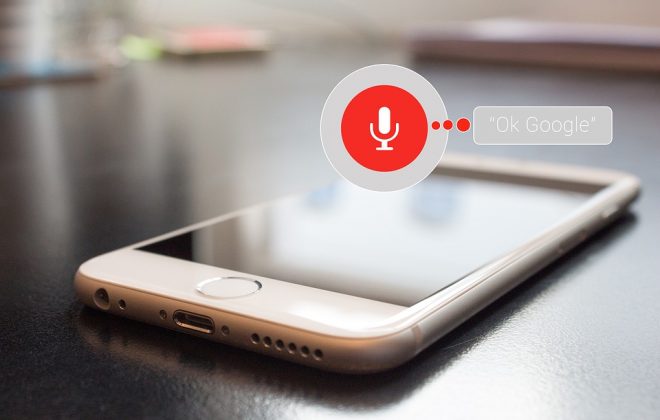How Chatbots Can Shape the Future of Healthcare
As per latest reports from Juniper Research, adoption of chatbots in the healthcare industry has the potential to save around $3.6 billion globally by 2022. Healthcare providers using bots can save on an average 4 minutes per inquiry, which can result in cost savings on an average of $0.50-$0.70 per patient interaction.
With the rise in artificial intelligence and other modern technologies, software programs have increased their ability in mimicking human conversations, which has led to the popularity of chatbots. Siri, the AI assistant-part of Apple’s standard software for their products, was responsible for giving chatbots their due recognition in 2011. As a result, brands of all kinds started embracing chatbots, and this gave rise to the new trend in conversational UX. Slowly, the use of chatbots spread to other industries as well and the healthcare industry started adopting them to solve many of their healthcare-related challenges effectively.
Facebook was the first company to enable companies with messenger bots to help communicate with the users. HealthTap is one such solid example, which released its first health bot across the messenger app that allows users to ask questions to the doctors and seeks their advice for the patients.
Why Use Chatbots In Healthcare?
Chatbots use artificial intelligence for gathering information automatically from the information database or via the Internet for predicting, analyzing, and answering the questions from the users. In healthcare, chatbots can be valuable as they can provide assistance to care providers in answering medical queries, gathering patient information, and also for scheduling appointments.
They can make several manual tasks more manageable and easy for the physicians in accessing medical related information, writing prescriptions, ordering medical supplies when required. These chatbots are specifically designed to be conversational, which makes the experience more realistic for the patients as if they were interacting with nurses or physicians themselves. Chatbots can pull out relevant information and schedule an appointment instantly, rather than the patients having to browse through the search engines for information.
Key benefits of using Chatbots in healthcare industry
The rising popularity of chatbots shows the real value and use they bring to the table. Specifically, in the healthcare industry, chatbots offer a lot of benefits such as –
Chatbots are interactive and provide personalized experience
Most of the healthcare providers have a passive relationship with their patients, especially when it comes to communication with them. The patients search for the information on the Internet which can be limiting in itself and can often leave many medical queries unanswered. With the use of chatbots, this communication gap can be overcome as the chatbots are friendly and provide improved navigation to the patients, while sharing all the required information, almost in real time. This helps the patients feel connected with their healthcare system as the bots make them feel important by making the conversation more engaging to them.
Chatbots can manage data with greater efficiency
Chatbots have the ability to manage a tremendous amount of data which is stored by the healthcare providers. The chatbot can effectively use the metrics through interactions for the purpose of analysis. In turn, this data may be used for making predictions about trends to meet different demands of their customers. They can also provide real-time analytics along with reports which can help in reducing the requirement for performing an audit.
Chatbots can provide quick access to vital health information
Chatbots may be valuable in collecting patient history, providing diagnosis, and prescribing medications as well as in booking appointments. This improved speed and efficiency can result in reduced response time for inquiries which helps in attending to medical issues quickly. Instead of accessing information online, patients can get information in real time and medical assistance can be quickly provided to them.
Chatbots can provide quality care and follow up services
Chatbots can act as virtual nurses and assist in providing post-discharge care to the patients. They can enable the patients to take the right medications on time and connect them with their care providers remotely. Follow up care can also be improved by encouraging patients to record their symptoms thereby helping in monitoring their progress.
Challenges that chatbots can solve for better healthcare
- Using chatbots, patients can communicate their symptoms through the messenger and get a consultation with the doctor without spending too much time in booking appointments. By asking a series of questions related to the patient’s age, gender and health issues, chatbots can seamlessly create a patient profile in the background, which can be timesaving for health professionals. This same information can be used for completing forms during admission or for making an appointment.
- There can be better patient and doctor engagement using chatbots. Chatbots can be helpful for elderly patients who may not be able to use a complicated mHealth app, but can freely talk to the chatbot to discuss their health concerns.
- With the recent advancements made in AI, chatbots are being made more realistic by using algorithms which can detect emotions using natural language which can help them to be more considerate towards the patients. Image recognition is also being used to enable chatbots in processing images, handwritten scripts along with QR barcodes.
Real-World Examples of Chatbots in Healthcare
Let’s take a look at some real-world examples of how chatbots are effectively meeting some of the healthcare challenges-
- Boston Medical University Center based on it’s project RED has developed virtual nurse, Louise, which has the ability to describe the condition to the patients, train them to use medications, and go through their home care needs at the time of discharge.
- MD, a UK based robotic health assistant based on AI, enables patients to put their symptoms and ask more questions pertaining to their age, gender along with other symptoms to arrive at a diagnosis. After receiving information about the specific medical condition, the patient may be referred to a right primary health care provider.
- ly, based in California, has created a virtual nurse, Molly, who can assist patients who are being discharged by enabling them to maintain their personalized treatment plan. It also helps in recording data and vital parameters of the patients along with their physical activities and notifies the healthcare provider of any health-related risks or concerns of the patient.
Chatbots, undoubtedly, are revolutionary tools which have the ability to bring a huge transformation in the healthcare industry by boosting patient engagement and providing quality care.




